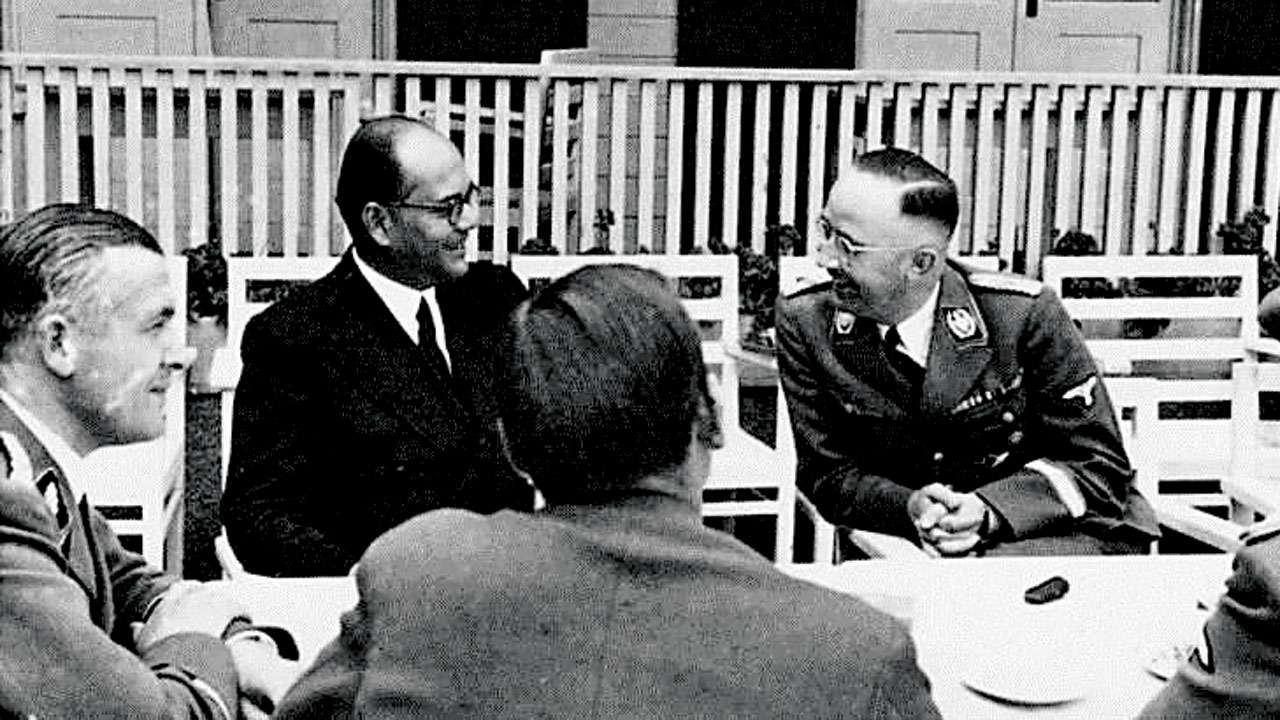
As Netaji Subhash Chandra Bose features in the news once again, let us remember his first army, the ill-fated Indian Legion a.k.a. Azad Hind Legion a.k.a. Legion Fries Indien. Raised in Germany, this force never had its moment in the sun — like the Indian National Army (INA) had in Southeast Asia. The Indian Legion would sink into meaningless existence right after creation. Leaderless and dejected after Netaji left Europe, the Indian Legion became tainted by association with a notorious military formation. Soon the Legion was cornered by Allied Forces and French Resistance Partisans (anti-Nazi guerillas): there are some chilling accounts of those events. The survivors who made it to India never got the welcome and the recognition the INA did.
This story takes off when Netaji arrived in Berlin on April 3, 1941. He outsmarted the British, crossed Afghanistan, and was spirited across Russia (then allied with Nazi Germany) to Germany. Bose was consumed with the idea of throwing the British out of India – and Hitler seemed to be unstoppable. The Germans wanted to weaken their British foes and welcomed Bose, a leader of pan-India stature. The Nazi regime recognised a provisional “Free India Government” in exile under Bose. They also promised him an army to help liberate India. Even before Bose had arrived in Germany, a few Indian Prisoners-of-War (POW) had turned against their former overlords. This would be the nucleus of the promised army, now christened the Indian Legion. The Legion would ultimately act as a pathfinder force for the planned German campaign into India. This seemed feasible back then since General Rommel’s Afrika Korps was sweeping across North Africa towards West Asia. The Germans hoped that when the Indian invasion commences, a liberating army under Bose would trigger public unrest in India. Bose conducted massive recruitment drives in Indian POW camps in Europe. However, only about 5,000 volunteered, despite many months of effort. Mass ceremonies were held in which Indian POWs joined in oaths of allegiance to Hitler and Bose. The Indian Legion was formally attached to the Wehrmacht, Germany’s professional armed forces. The Legion had mixed units comprising of all religions, regions, castes and classes. The commanding officers were German though.
Germany’s Russian invasion in June ‘41 shocked Bose, a left-leaning leader, but he was powerless. Hitler’s armies smashed into Russia and it seemed that the German forces in Russia would roll down the Caucasus and rendezvous with Rommel’s armies in Persia. Next target, India! However, Netaji was thwarted when the tide turned by end of ‘42. Defeated in North Africa and at Stalingrad, Germany retreated. Netaji now became convinced that his Legion would be used only for propaganda purposes - or as 2nd class units. He also understood that staying in Germany was useless. In February 1943, Bose boarded a submarine bound for Japan, which was making significant gains in the land war in Asia. The rest is history.
However, this left the Indian Legion in Germany leaderless and demoralised. The liberation army was now a mere collaborator — just another pawn of Hitler’s regime. The Legion was moved all across Western Europe for some time. After the Normandy landings, the Legion was pried away from the Wehrmacht; it was attached to the Waffen-SS, the military wing of the Nazi Party. The Waffen-SS was manned by ardent Nazis and they conducted great atrocities during the war. This association alone would taint the Legion.
As Hitler’s armies retreated, the Indian Legion trudged along. During this time certain units of the Legion reportedly committed atrocities on civilians and the French Resistance. However, other units performed well in battle and in anti-partisan operations. When German surrender seemed imminent, the Legion attempted to flee to neutral Switzerland. However, Allied forces intercepted them. Some French units and partisans with a grudge closed in — there are accounts of groups of Indian soldiers being summarily executed. The remaining were handed over to the British Army, who mistreated the “oath-breakers”. The men were soon shipped back to India and some stood at the INA Trials on charges of treason.
Unlike the INA, which was popularly perceived to have fought for freedom close to India’s borders, the Indian Legion suffered ignominy. Nevertheless, due to public uproar during the INA Trials the Indian Legion’s trials were not completed. Soon Independence came, and the soldiers of INA and the Indian Legion were released. However, they were not allowed to serve in the post-independence Indian Army, except in rare exceptions. The government fell silent on the saga of the Indian Legion while the INA story was celebrated (at least for a while): Indian troops fighting for Hitler was not something to advertise. Thus, the Indian Legion, Netaji’s firstborn army, was orphaned by war and politics. It remains largely forgotten outside historical research.
The author is an IIM Ahmedabad alumnus working in the energy sector. He has a keen interest in history, politics and strategic affairs.